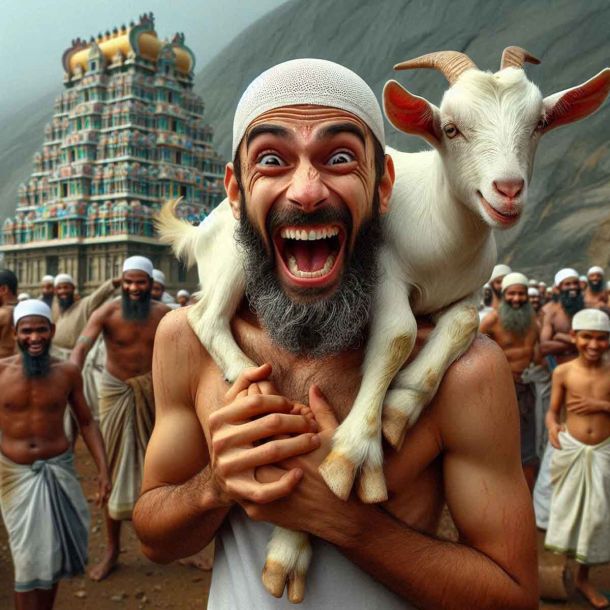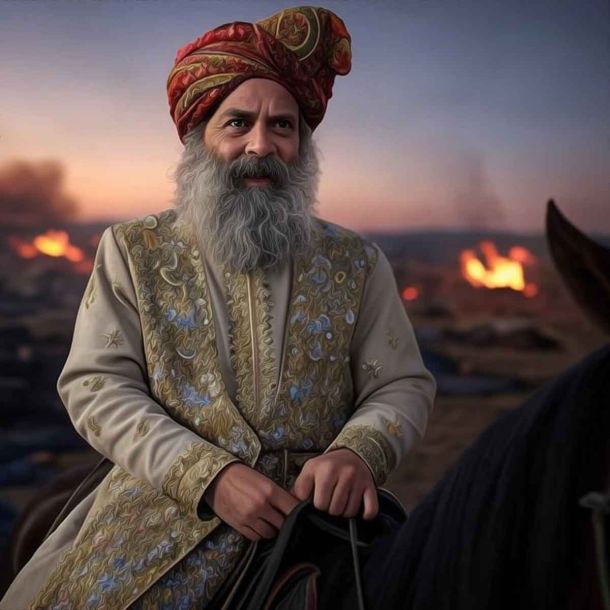More Coverage
Twitter Coverage
Satyaagrah
Written on
Satyaagrah
Written on
Satyaagrah
Written on
Satyaagrah
Written on
Satyaagrah
Written on
Join Satyaagrah Social Media
"Varahamihira - ancient Astrologer, Astronomer and Mathematician": His encyclopaedic knowledge and lively presentation of subjects, as dry as astronomy, made him a celebrated figure, discovered trigonometric formulas and Pascal’s triangle

Even thousands of years before, India had become famous and reached its pinnacle in astrological and astronomical sciences. Ancient Astrological works had been translated into many foreign languages. Ibn Batuta and Al Baruni were two prominent Arab travellers who had visited ancient India specially to pursue Astrology.
Through their translations, they induced German scholars to come to India to study Astrology and Vedic literature. Varahamihira was one of the only renowned Indian Astronomers, Mathematician, and Astrologer whose name became a household word throughout India and it is said his near contemporaries Aryabhata and Brahmagupta even did not match the popularity of Varahamihira.
| His encyclopaedic knowledge and his lively presentation of subjects, as dry as astronomy, made him a celebrated figure, writes MEERA S. SASHITAL. |
Varahamihira was born in 499 A.D. into a family of Brahmins settled at Kapittha, a village near Ujjain. His father, Adityadasa was a worshipper of the Sun god and it was he who taught Varahamihira astrology. On a visit to Kusumapura (Patna), young Varahamihira met the great astronomer and mathematician, Aryabhata. The meeting inspired him so much that he decided to take up astrology and astronomy as a lifetime pursuit. At that time, Ujjain was the center of learning, where many schools of arts, science, and culture were flourishing during the prosperity of the Gupta reign. Varahamihira, therefore, shifted to this city, where scholars from distant lands were gathering. In due course, his astrological skills came to the notice of Vikramaditya Chandragupta ii, who made him one of the Nine Gems of his court.
|
It is interesting to note how Varaha-mihira got the title ‘Varaha’. King Vikramaditya was aghast at the royal astrologer Mihira’s prediction. He looked around the well-lit and crowded court and asked in anguish “Can it be true?” There was no reply. There was pin-drop silence as all were shocked beyond words at the royal astrologer’s prediction. Breaking the silence and full of grief himself, the royal astrologer confirmed the prediction, “The position of the planets predicts the death of the prince at the age of18.” Though the King controlled his emotions, the Queen could not contain herself and wailed “My lord, you should see to it that this prediction proves false.”
|
Though the King had full faith in his astrologer Mihira, he took every precaution to protect and save his son. But on the predicted day, a boar killed the prince. When the news reached the King, he summoned Mihira to his court and told him “I am defeated, you have won, you have won.” The astrologer was as sad as the king, and he replied “My Lord. I have not won. It is the science of astronomy and astrology that has won!” “Whatever it may be, my respected astrologer,” said the King. “It has convinced me that your science is nothing but the truth. And for your mastery of the subject, I now confer upon you the Magadha kingdom’s greatest award, the emblem of the varaha (boar).” So from that time, Mihira came to be known as Varahamihira.
Varahamihira was learned in the Vedas, but he was not a blind believer in the supernatural. He was a scientist. Like Aryabhata before him, he declared that the earth was spherical. In the history of science, he was the first to claim that some “force” might be keeping bodies stuck to the round earth. The force is now called gravity.
|
Scholars are of the view that Varahamihira had constructed “Meru Stambh”, what is presently famous as Qutub Minar, 2200 years ago, for doing research on astronomy. It was a seven-storied structure constructed in the middle of a lake. These seven stories symbolized seven planets and the structure also had 27 windows symbolizing twenty-seven constellations. Black stone has been used in the construction of Meru Stambh so that there was darkness inside. The main entrance faces North and is slanted slightly backward towards South at an angle of five degrees. Its foundation is 26 yards deep and its actual height was 84 yards but which now has been reduced to 76 yards. Britishers had demolished the topmost storey to prevent the structure from falling as the slant was more prominent at the top and it caused a threat to the structure.
Varahamihira’s main work is the book Pancha Siddhantika (“Treatise on the five Astronomical Canons gives us information about older Indian texts which are now lost). The work it seems is a treatise on mathematical astronomy and it summarises five earlier astronomical treatises, namely, the Surya Siddhanta, Romaka Siddhanta, Paulisa Siddhanta, Vasishtha Siddhanta, and Paitama Siddhanta. Panch Siddhanta holds a prominent place in the realms of astronomy. He proposed that the Moon and planets are lustrous not because of their own light but due to sunlight. It is acclaimed that Pancha Siddhantika of Varahamihira is one of the most important sources for the history of Hindu Astronomy from before the time of Aryabhata.
|
Another important contribution of Varahamihira is the encyclopedic Brihat-Samhita. It covers wide-ranging subjects of human interest, including astrology, planetary movements, eclipses, rainfall, rainfall, clouds even domestic relations, gems, pearls, and rituals. The volume expounds on the gemstone evaluation criterion found in the Garuda Purana and elaborates on the sacred Nine Pearls from the same text. It contains 106 chapters and is known as the “great compilation”.
Being an Astrologer he wrote on all the three main branches of Jyotisha astrology. It covered Brihat Jataka which is considered one of the five main treatises on Hindu astrology on Horoscopy; Laghu Jataka, Samasa Samhita, Brihat Yogayatra, Yoga yatra, Tikkani Yatra, Lagu Vivaha Patai, Daiiivajna Vallabha (apocryphal). His son Prithuyasas also contributed to Hindu Astrology; his book Hora Sara is a famous book on Horoscopy.
Varahamihira’s mathematical work included the discovery of trigonometric formulas. He improved the accuracy of the sine tables of Aryabhata l. He defined the algebraic properties of zero as well as of negative numbers. Furthermore, He was among the first mathematicians to discover a version of what is now known as Pascal’s triangle. He used it to calculate the binomial coefficients.
|
Varahamihira made some significant observations in the field of ecology, hydrology, and geology too. His claim that plants and termites serve as indicators of underground water is now receiving attention in the scientific world. He was also a prolific writer. His mastery of Sanskrit grammar and poetic meter enabled him to express himself in a unique style. His encyclopedic knowledge and his lively presentation of subjects, as dry as astronomy, made him a celebrated figure. His treatise such as Pancha Siddhantika (Five Principles), Brihatsamhita (Master Collection), and Brahjataka (Astrological work) have put him on as high a pedestal in Astrology as Kautilya’s in Political philosophy, Manu’s in Law or Panini’s in Grammar.
It is learned, Varahamihira humbly said about his own treatises: “The science of Astrology is a vast ocean and is not easy for everyone to cross it. My treatises provide a safe boat.” Truly, even now they are acknowledged as masterpieces.
|
|
References:
 Support Us
Support Us
Satyagraha was born from the heart of our land, with an undying aim to unveil the true essence of Bharat. It seeks to illuminate the hidden tales of our valiant freedom fighters and the rich chronicles that haven't yet sung their complete melody in the mainstream.
While platforms like NDTV and 'The Wire' effortlessly garner funds under the banner of safeguarding democracy, we at Satyagraha walk a different path. Our strength and resonance come from you. In this journey to weave a stronger Bharat, every little contribution amplifies our voice. Let's come together, contribute as you can, and champion the true spirit of our nation.
 |  |  |
| ICICI Bank of Satyaagrah | Razorpay Bank of Satyaagrah | PayPal Bank of Satyaagrah - For International Payments |
If all above doesn't work, then try the LINK below:
Please share the article on other platforms
DISCLAIMER: The author is solely responsible for the views expressed in this article. The author carries the responsibility for citing and/or licensing of images utilized within the text. The website also frequently uses non-commercial images for representational purposes only in line with the article. We are not responsible for the authenticity of such images. If some images have a copyright issue, we request the person/entity to contact us at This email address is being protected from spambots. You need JavaScript enabled to view it. and we will take the necessary actions to resolve the issue.
Related Articles
- "Culture is the widening of the mind and of the spirit": Origin of the timepiece AM and PM - Arohanam Martandasaya means the ascension (rise) of the sun, Patanam Martandasaya means the inclination of the sun
- "Sringara Prakasa - Sanskrit poetry": Classical theater, dancers (Bharatanatyam, Odissi, Mohiniyattam) refer to Sringara as 'the Mother of all rasas, one of the nine rasas, usually translated as erotic love, romantic love, or as attraction or beauty
- "Sanskrit is the language of philosophy, science, and religion": A Neuroscientist, James Hartzell explored the "Sanskrit Effect" and MRI scans proved that memorizing ancient mantras increases the size of brain regions associated with cognitive function
- "Symbols are powerful because they are the visible signs of invisible realities": Real Sindoor comes from a tree, a low-height tree that finds mention in our scriptures. Seeds from the tree are crushed to make fine powder and were used by Sita and Hanuman
- "When we bring what is within out into the world, miracles happen": Built by the Rajput king Sawai Jai Singh II in 1734, UNESCO World Heritage site Jantar Mantar, Jaipur is an astronomical observatory, which features the world’s largest stone sundial
- PM Modi inaugurates rebuilt Shankaracharya samadhi in Kedarnath and said ‘Adi Shankara brought life to a sleeping civilisation, awakened Bharat to rise above caste boundaries’
- Bhagwad Gita course for corporates is all set to launch at IIM Ahmedabad, will teach management and leadership
- 16 year old freedom fighter Shivdevi Tomar, who killed 17 Britishers and wounded many
- "From the heart of Himachal, gratitude emerges": After decades of waiting, Himachal’s Hatti community revels in tribal recognition, sending gratitude to PM Modi, a testament to their unwavering spirit and the mountains of Sirmaur that stood witness
- The Basis of Universal Spirituality - Defence of Hindu Society
- “A real friend is one who walks in when the rest of the world walks out”: PM Modi hails Indian relief teams work, says India strengthened identity as a selfless country, India launched 'Operation Dost' for assistance to Turkey and Syria after earthquake
- "Purify your hearts with the water of love of motherland in national temple, and promise that millions will not remain untouchables, but brothers and sisters": Swami Shraddhanand, who awoke Hindu consciousness
- अथ रामचरितमानस प्रकाशन कथा: गीता प्रेस, गोरखपुर ने 1938 से रामचरितमानस का प्रकाशन शुरू किया
- “Music in the soul can be heard by the universe”: Konnakol is the art of performing percussion syllables vocally, and often referred to as a "mathematical language" due to the close relationship between the rhythms in Konnakol and mathematical principles
- "Aum Maheshwaraya Namaha": Salutations to the Supreme Person, the boundless Being who wields his triune power for purpose of creation, preservation, and dissolution, the indwelling Spirit within all beings and unseen director of everything
























